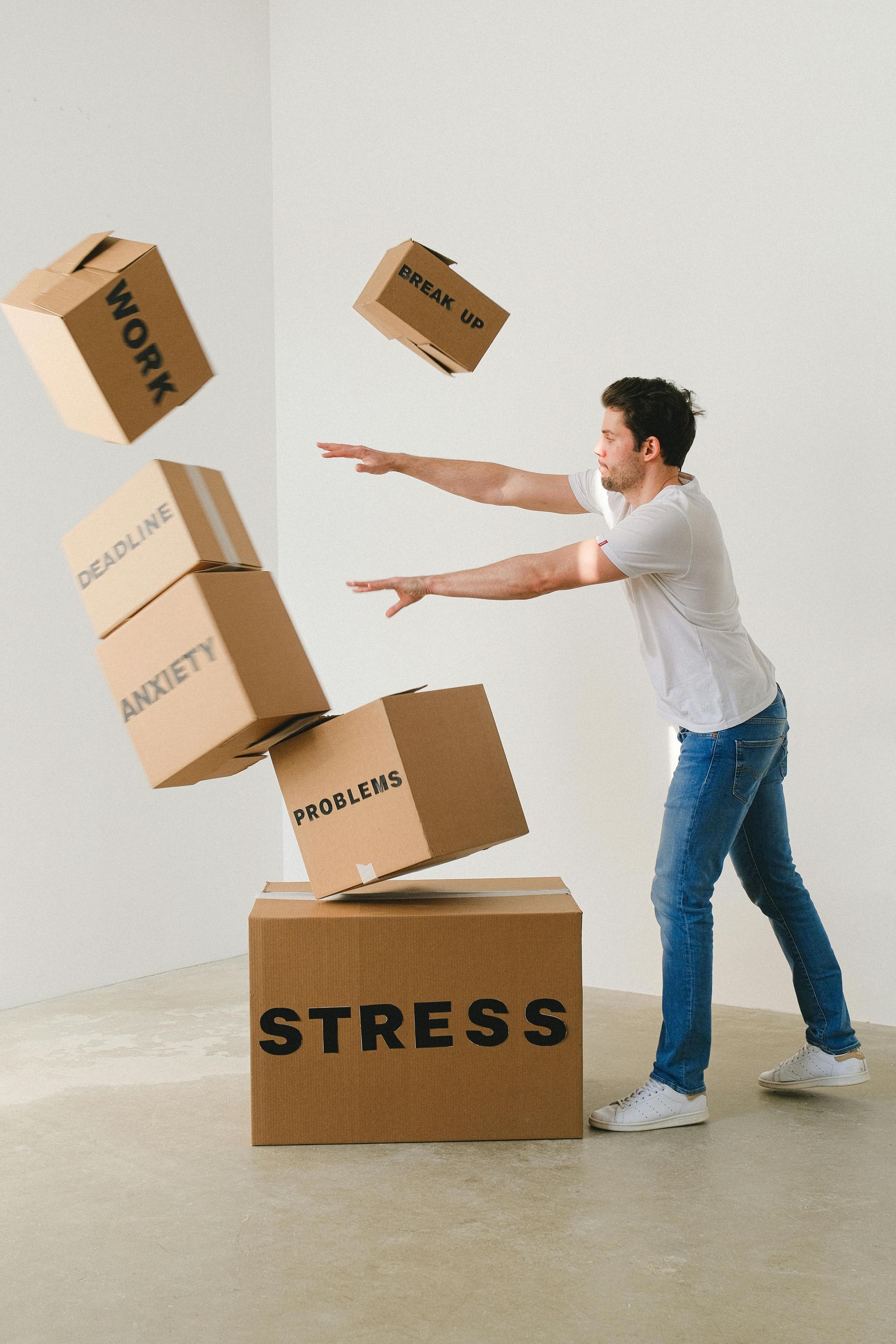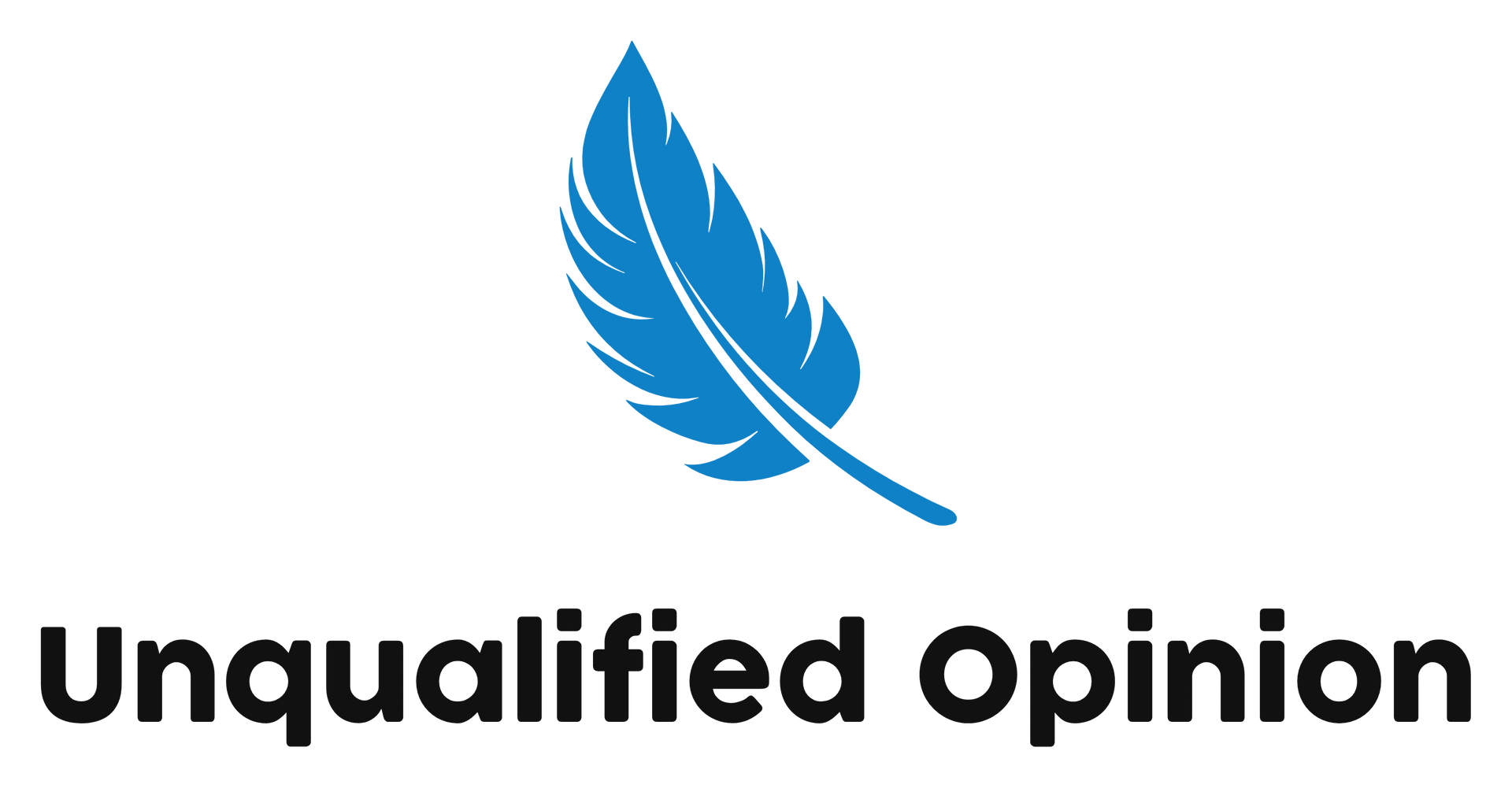(4 min) Everyday Life with ADHD: Why the Little Things Can Sometimes Feel Like Big Things... Like Really Big Things!

If you’ve ever spent three hours researching productivity hacks without doing a single task, or decided you wanted to find that one hat in the attic and it turned into a 48 hour complete renovation into a master suite and bathroom… Hi, you might have ADHD.
Before I was diagnosed and started doing the learning, this was basically me. A study in opposites... can't get started, or just can't stop myself.
My friend Maria, would always say that I always take things "to the next level"... and while she meant it as a compliment, it wasn't always a good thing.
Here is a great example: (this prior to being diagnosed with ADHD & Fibro FYI)
My partner Andrew and I were talking one day and I confided in him that I wasn't super happy about how our move to his hometown had turned out. I wasn't making any friends, it was always super hot, and it just didn't feel like home.
So he said "you need a hobby". And I said "You're right, I just don't know what I would do". And he said, "Instead of being focused on work, why don't you do something just for you... that is fun". And I literally had to sit and think for like 20 minutes before saying "Oh, well in University I made soap as a side hustle... that was fun". And he was like "Cool, do that". (side note: the most fun thing I could think of was when I worked a side hustle in university? *sigh*)
Within about an hour, I had ordered all the supplies, the tools, and extras. I had signed up for a Canva account and was designing new labels. I was researching new products that weren't as popular back when I was doing this before (e.g., bath bombs, pillow sprays, etc.).
I was AMPED. It was new and shiny. I poured myself into it.
Within 24 hours, I had decided that if I am going to go through all the work, I might as well sell some and make my money back so I started a new company called "Aquaveda Bath". I registered the company, got insurance, bought a branding kit, and started looking for local markets to sell at.
Then I learned about the rules of these markets... you need a table of a certain size, you need table cloths that reach the floor, you need a buggy to transport your goods from the parking lot to the venue, etc. etc. etc. Do you see where this is going?
Within 2 weeks all supplies and extras and buggies and tables had come in and I started making the supplies. Within 3 weeks I had the basement set up as a test-ground for farmer's markets... different tables, different set ups, different types of signage. This was no longer a hobby, I was running a company on top of my full time job.
And what happened, you wonder?
I got sick. Very Sick. In fact, you can read about it in this post. I missed celebrating my 10-year anniversary. I missed celebrating my birthday. I missed nearly 10 weeks of work... and to be honest, while I am better now, I have never fully recovered.
There was no way I could keep up with the physical demand and labour of soap making so I had to give the company up before even selling a single item. I had thousands of dollars worth of inventory stacked beautifully on tables in the basement and didn't have the strength to go to the markets. So I ended up just giving it all away to friends and family for Christmas and Birthdays and random thank you's to the doctors and service providers who helped me during that difficult time.
And no, it wasn't the ADHD that made me sick. Turns out I was diagnosed with Fibromyalgia. But, I do know it was the ADHD that had me turn a simple comment about hobbies into starting a full-fledged company... which eventually lead to the stress that put me in the Fibro flare-up.
This is life with ADHD. Can you relate?
ADHD isn’t just about being “distracted.” It’s a full-body, whole-life experience that touches everything from brushing your teeth to managing your relationships. And when society expects linear logic, hyper-focus on demand, and the ability to remember appointments, well it gets messy.
It also depends on your diagnosis. Right now, as I am writing this post, the three common types of ADHD, as defined by the DSM-5 (Diagnostic and Statistical Manual of Mental Disorders, 5th Edition), are:
ADHD – Predominantly Inattentive Presentation
Key traits:
- Trouble focusing or sustaining attention
- Easily distracted
- Frequently disorganized or forgetful
- Difficulty following through on tasks or instructions
- Often loses things, misses details, or appears “spacey”
This is more common in girls and adults, and may be overlooked as “daydreamy” or “unmotivated.” I have a checklist of common symptoms of ADHD in girls and women in the freebies section of the site. Sign up to the newsletter to get access to the page.
ADHD – Predominantly Hyperactive-Impulsive Presentation
Key traits:
- Fidgeting or restlessness
- Constant movement or talking
- Impulsive decisions or blurting out answers
- Difficulty waiting turns or staying seated
- May interrupt or intrude in conversations
Often more noticeable in children, especially boys. Sometimes misread as “behavior problems.”
ADHD – Combined Presentation
This is when both inattentive and hyperactive-impulsive symptoms are present in a significant and impairing way.
Key traits:
- Symptoms from both categories above
- Most commonly diagnosed type
- Can fluctuate in presentation depending on age, environment, and support
Think of this as the “classic ADHD” most people picture but with plenty of nuance.
Let’s break down the most common ADHD life struggles, why they happen, and what you can actually do about them. And while you are reading this, you need to keep in mind that ADHD doesn't look the same for everyone. Although science hasn't said this definitively yet, I do believe ADHD is a spectrum, so you may find that some things listed below aren't difficult for you at all, while others are like pulling teeth!
1. Time Management: The ADHD Time Warp
The Struggle:
You're either three hours early, or you look at the clock and realize your appointment started 45 minutes ago. Time is not a construct—it’s a shapeshifting villain when you have ADHD.
Why It Happens:
ADHD brains struggle with time blindness, a term that describes the inability to accurately sense the passing of time. Your brain doesn’t naturally organize tasks by “what’s due soon,” but instead responds to “what’s interesting right now or about to be on fire.”
The Fix:
- Timers, alarms, and visual cues. Use your phone timer. Set calendar alerts with obnoxious sounds. Use a visual time tracker like a Time Timer.
- The “Now & Not Now” Rule. Instead of a full schedule, try thinking in terms of “What am I doing now, and what is not now?”
- Body doubling. Having someone else nearby while you work (even virtually) helps anchor you to time and task.
2. Task Initiation: The Invisible Wall of "Starting"
The Struggle:
You want to do the thing. You know you need to do the thing. But your brain flat-out refuses to start the thing.
Why It Happens:
Task initiation requires executive function, the part of your brain that acts like a project manager. But in ADHD brains, that part’s often out to lunch. Starting requires a dopamine hit… and if the task doesn’t provide it, your brain will short-circuit and chase something shinier.
The Fix:
- Break it down. Then break it down again. Instead of “clean the kitchen,” try “put dishes in sink,” “wipe one counter,” or “throw away one item.”
- Use the “10-Minute Trick.” Tell yourself you’ll just do 10 minutes. ADHD brains often just need to overcome the starting inertia.
- Gamify it. Use apps like Habitica or do “speed rounds” with a friend: 15 minutes on, 5 minutes off.
3. Paperwork, Bills, and Bureaucracy: Executive Dysfunction’s Playground
The Struggle:
Forms pile up. Bills get buried. Tax season feels like a horror film. Bureaucratic tasks = instant overwhelm.
Why It Happens:
These tasks are boring, tedious, and abstract. That’s the triple threat of ADHD doom. If the task lacks novelty, urgency, or emotional engagement, the ADHD brain sees it as white noise.
The Fix:
- Externalize your system. Out of sight = out of mind. Keep visible bins, folders, or dashboards where you track tasks.
- Create “Admin Hour.” One time each week, pair all boring adult tasks with rewards (coffee, a favorite playlist, a cozy chair).
- Automate and delegate. Use autopay, email filters, and AI assistants. If it’s not your zone of genius, outsource it when you can.
4. Housework and Clutter: The ADHD Tidy Tornado
The Struggle:
You clean one thing, then get distracted by another, then end up alphabetizing your spice rack at 2 a.m. while laundry molds in the washer.
Why It Happens:
ADHD affects working memory, making it hard to hold a plan in your mind. Add in sensory sensitivity, decision fatigue, and hyperfocus on irrelevant details? Yeah, cleaning becomes chaos.
The Fix:
- Micro-zones. Clean one counter, not the whole kitchen. One drawer, not the whole closet.
- Staging baskets. Not everything needs to be put away right now. Create baskets for “put away later” in high-clutter areas.
- Body double + playlist = magic. Invite a friend over (virtually or IRL), pop in earbuds, and play your cleaning hype mix.
5. Remembering… Literally Anything
The Struggle:
Birthdays, grocery lists, what you just walked into the room for. If it’s not in front of you, it might as well not exist.
Why It Happens:
ADHD impairs working memory and object permanence. Your brain has a harder time holding temporary information or remembering things that aren’t visible.
The Fix:
- Sticky notes, whiteboards, and visual reminders. Cover your house in helpful cues. It’s not “messy,” it’s survival.
- Verbal processing. Talk through what you need to remember out loud. Record voice memos. Say things three times. Make it real.
- Use your tech. Calendar alerts, reminder apps, smart home devices (“Hey Google, remind me to take the chicken out at 3pm!”)
6. Decision Fatigue and Overwhelm
The Struggle:
Can’t decide what to eat, what to wear, what project to start. Every decision feels like picking the right wire to cut on a bomb.
Why It Happens:
ADHD means every choice requires more mental energy. You’re processing more options, more what-ifs, and more emotional reactions. Your brain’s decision battery drains fast.
The Fix:
- Routines = relief. Eliminate minor decisions by automating what you can (meal plan, outfit rotation, weekly schedules).
- Limit your choices. Don’t scroll through 300 options... pick 3 and choose from those.
- Outsource decisions when possible. Ask a friend, use a randomizer app, or literally flip a coin.
7. Rejection Sensitivity and Emotional Outbursts
The Struggle:
You get criticism and it feels like you’ve been stabbed. You’re ghosted and spiral for days. You can’t shake emotional reactions even when you know they’re “irrational.”
Why It Happens:
Many people with ADHD also experience Rejection Sensitive Dysphoria (RSD) an intense, fast emotional reaction to perceived rejection or criticism. Your nervous system goes from 0 to 100 in milliseconds. I wrote a post about this, and you can read it here.
The Fix:
- Name it to tame it. Realizing you’re having an RSD episode helps you respond instead of react.
- DBT skills are gold. Distress tolerance, radical acceptance, and mindfulness can calm your nervous system.
- Script it out. Prep responses in advance for emotionally triggering situations. Scripts create space between emotion and reaction.
Like I mentioned earlier, not everyone's ADHD is going to look the same. And your even your own ADHD can change over time. I am diagnosed with a combined presentation. As a child, I struggled with 1 through 7 inclusively. As an adult, undiagnosed and unmedicated, I continued to struggle with 2, 4, and 7. And now, diagnosed, medicated, and certified as an ADHD coach with every tool and therapy option at my finger tips (but going through perimenopause), I am struggling with 5 and 6 the most.
Living with ADHD in a world designed for neurotypical brains is like trying to read fine print without your glasses. It’s not that you can’t see... it’s that you need the right tools. I have tons of articles and free tools available here on the site. Sign up to the newsletter to get access to the freebies page. If you need more in-depth help, I have workbooks and courses and coaching coming to the store in the next month or so.
Keep an eye out!
Compassion + creativity = the ADHD secret sauce. You’ve got this!


